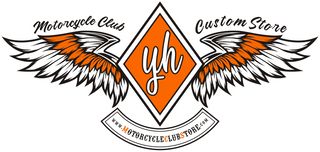Designing a logo for your club is more than just creating a visual mark; it's about encapsulating the essence of your club’s identity and values in a single, impactful symbol. A well-designed logo not only distinguishes your club from others but also creates a lasting impression on members and the wider community. Here’s an in-depth guide to help you navigate the process of designing an effective and memorable club logo.
1.Understand Your Club’s Identity
Before you even start sketching ideas, it's crucial to have a clear understanding of your club’s identity. This involves delving into what your club stands for and what it aims to represent. Consider your club's mission, values, and target audience. Are you a sports club focused on competition and camaraderie, or are you a hobbyist group with a shared passion for a specific interest? Understanding these elements will guide your design choices and ensure that your logo authentically reflects your club’s spirit.
- Questions to consider:
- - What is the core mission of your club?
- - What emotions or values do you want the logo to convey?
- - Who is your target audience?
2.Research and Inspiration
Gather inspiration from various sources to help spark ideas for your logo. Look at logos from similar clubs or organizations, and study their design elements. Identify what works well and what doesn’t. However, it’s important to avoid copying; instead, use these examples to inspire unique elements that will set your logo apart.
- Inspiration sources:
- - Club and organization logos
- - Industry trends and design styles
- - Design portfolios and case studies
3.Choose the Right Style
The style of your logo should align with your club’s identity and purpose. Different styles can convey different messages. For instance, a modern and sleek design might suit a tech club, while a vintage, emblematic style might be ideal for a historical or heritage-focused club. Here are a few styles to consider:
- Emblem:Features text inside a symbol or icon, often used by traditional organizations.
- Wordmark:Focuses on the name of the club in a stylized font.
- Iconic/Symbolic:Utilizes a simple icon or symbol that represents the club's essence.
4.Color Selection
Colors play a significant role in logo design as they evoke emotions and convey messages. Choose colors that align with your club’s values and desired image. For example, blue often symbolizes trust and professionalism, while red can convey energy and passion. Ensure that your color choices work well together and are versatile across different mediums.
- Tips for color selection:
- Use color psychology to guide your choices.
- Consider the color palette’s versatility in both digital and print formats.
- Limit the number of colors to maintain simplicity and clarity.
5.Typography Matters
The choice of typography in your logo can greatly impact its readability and overall impression. Select fonts that reflect the character of your club. A bold, sans-serif font might suit a sports club, while a serif or script font might be better for a more formal or traditional club. Ensure the text is legible at various sizes.
- Typography tips:
- Choose fonts that are easy to read.
- Ensure the typography complements the logo’s icon or symbol.
- Limit the number of different fonts to maintain cohesion.
6.Emphasize Simplicity
A successful logo is often simple and easily recognizable. Avoid clutter and focus on clean lines and shapes. A simple design ensures that your logo remains effective in various sizes and applications, from large banners to small digital icons. Remember, simplicity often translates to greater versatility and timelessness.
- Benefits of simplicity:
- Easier recognition and recall.
- Greater versatility across different media.
- More effective at conveying a clear message.
7.Create Versatile Designs
Your logo will be used in a variety of contexts, from digital platforms to printed merchandise. Therefore, it’s essential to design a logo that remains effective and clear across different applications. Test your design in various sizes and formats to ensure it maintains its integrity and impact.
- Versatility tips:
- Design in vector format to ensure scalability.
- Test the logo in different sizes and backgrounds.
- Create versions in color, black and white, and grayscale.
8.Seek Professional Help
If design isn’t your strength or if you’re looking for a high-quality, polished logo, consider hiring a professional designer. They bring expertise and experience to the table, ensuring that your logo not only looks great but also meets industry standards. Provide them with a clear brief about your club’s identity and design preferences to guide their work.
- Benefits of professional design:
- Expertise in creating effective and unique designs.
- Access to high-quality tools and techniques.
- Professional insight and refinement.
9.Gather Feedback and Refine
Once you have a draft of your logo, gather feedback from club members and stakeholders. Their perspectives can provide valuable insights and help you refine the design. It’s crucial that the final logo resonates with your audience and accurately reflects your club’s identity.
- Feedback tips:
- Collect input from a diverse group of stakeholders.
- Use constructive criticism to make improvements.
- Ensure the final design aligns with your initial goals.
10.Protect Your Logo
After finalizing your logo, consider taking legal steps to protect it. Trademarking your logo ensures that it is legally protected against unauthorized use and helps safeguard your club’s brand identity. This step can prevent potential legal issues and preserve your logo’s uniqueness.
- Protection steps:
- Apply for a trademark to secure your logo’s legal status.
- Keep records of the design process and final versions.
- Monitor for unauthorized use or infringement.
Creating a compelling and effective club logo involves careful consideration and design. By following these guidelines, you’ll develop a logo that not only stands out but also embodies your club’s spirit and values. With a well-designed logo, your club will have a powerful visual tool that helps build a strong and recognizable identity.
